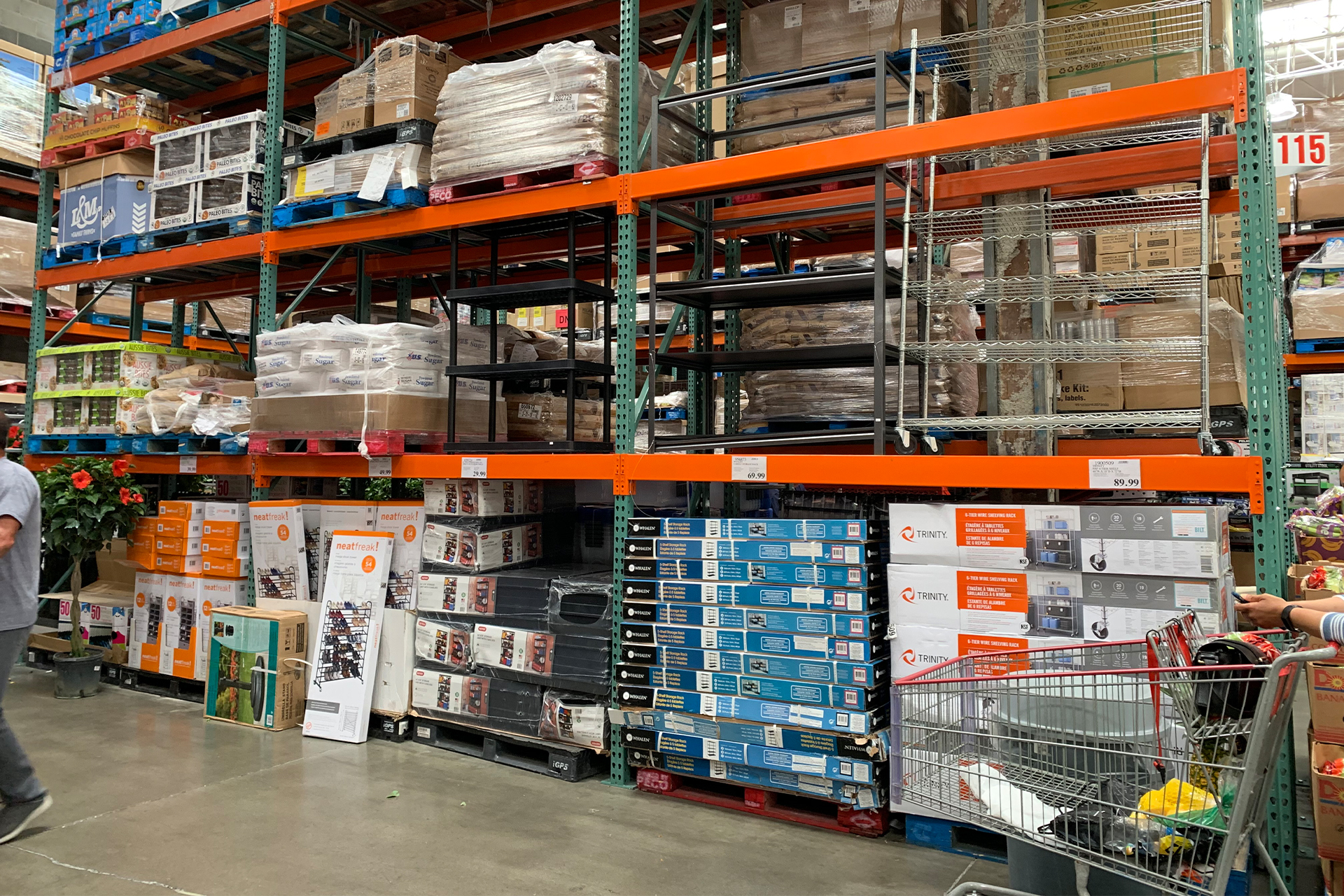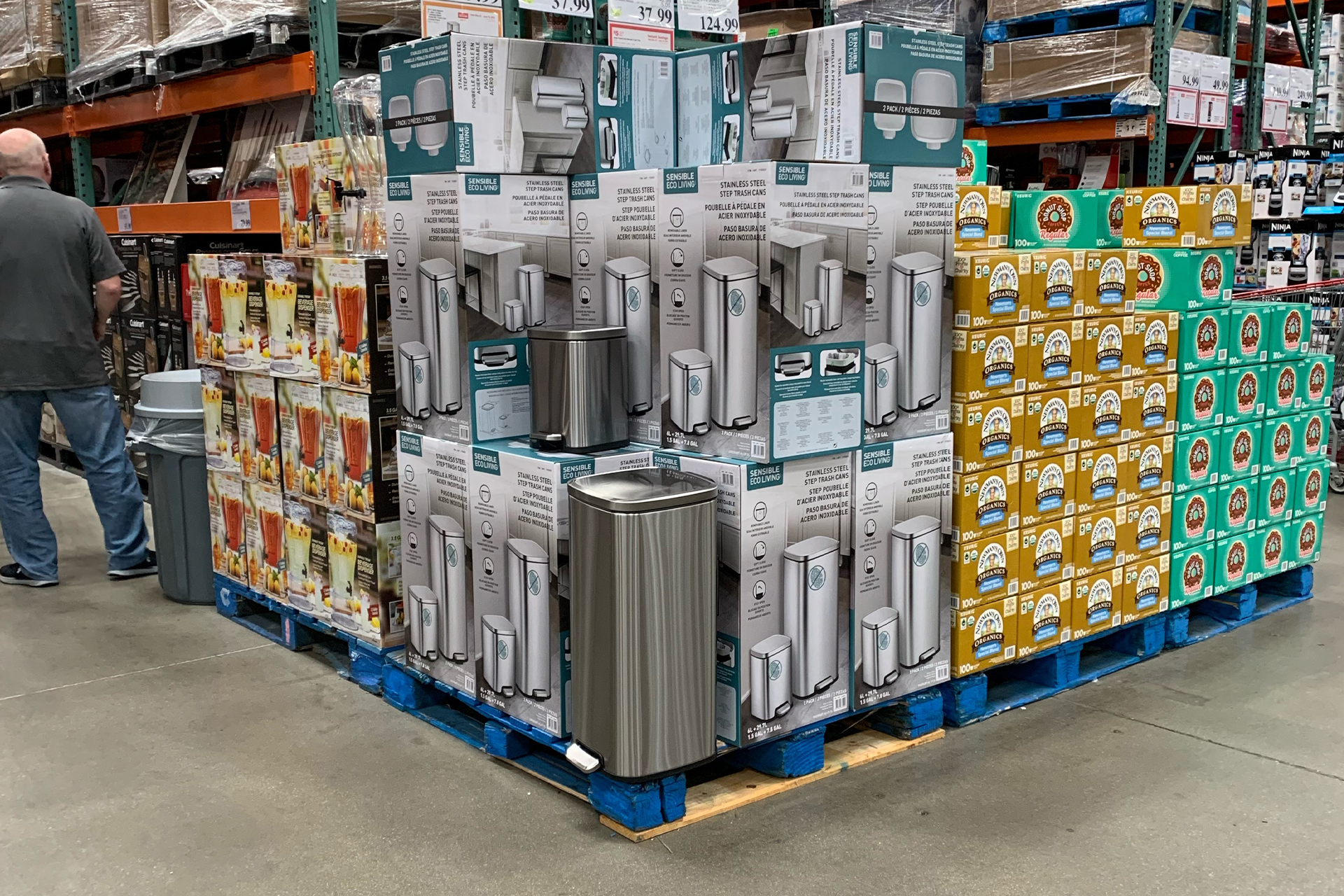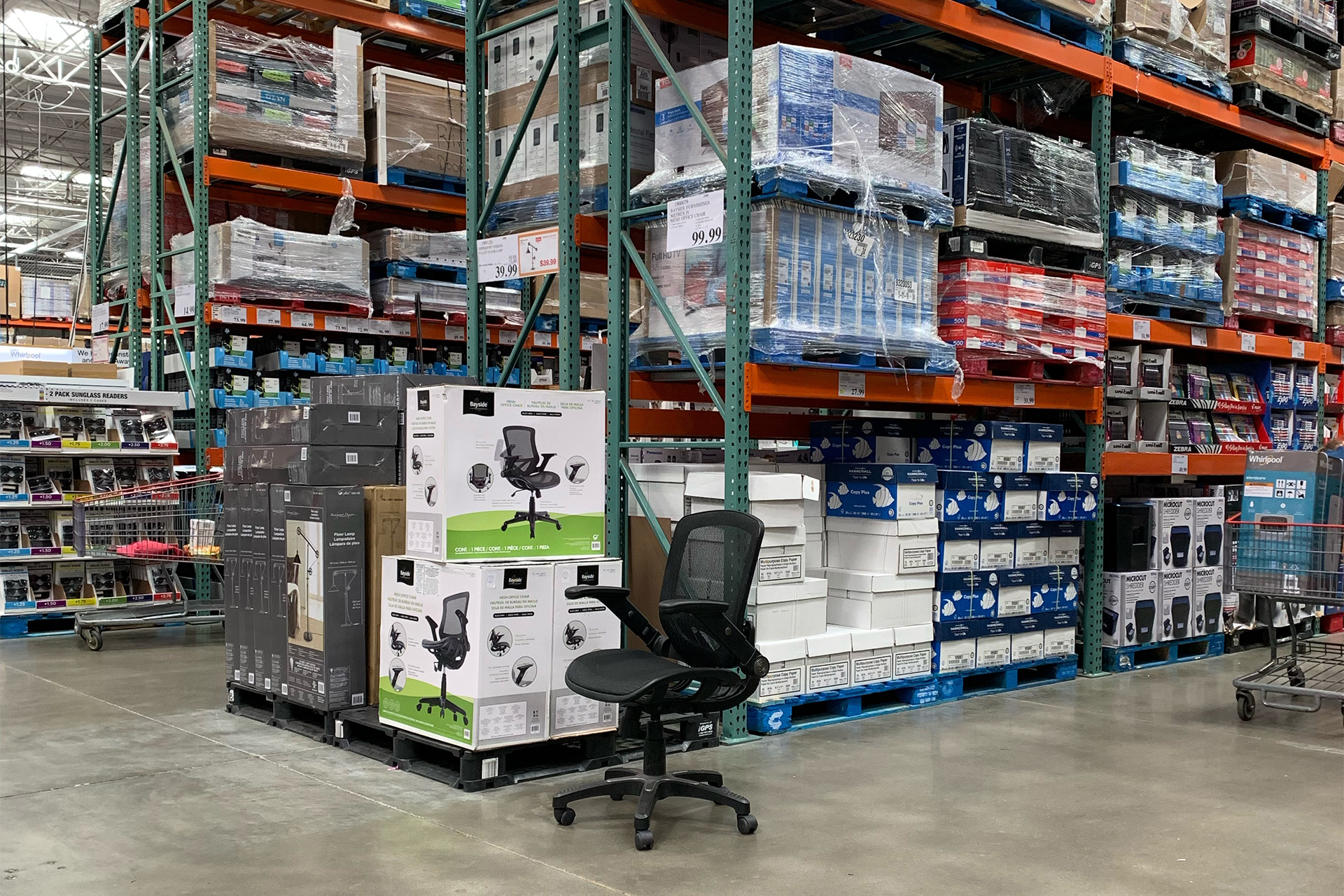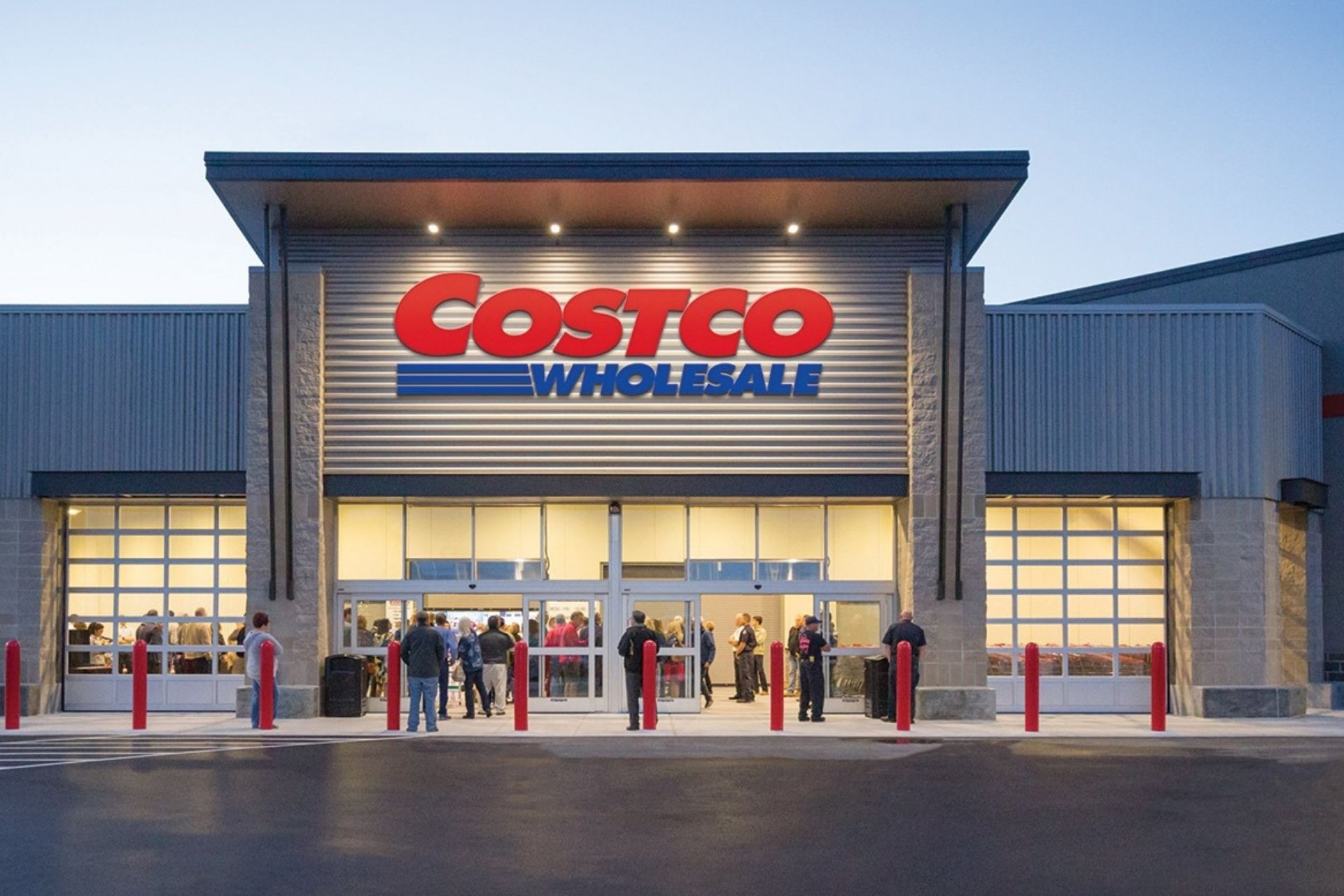This is the fifth installment of an exclusive HomePage News series examining the state of major home and housewares retailers entering the back half of 2021.
Read all installments of the HomePage News series: Big Retail Beyond 2021.
The COVID-19 pandemic provided ample evidence that Costco is primed to be a key retailer for another generation of shoppers because consistent delivery on its brand promise continues to build trust in the company for consumers.
In many ways, Costco got through the pandemic by staying true to itself. Costco suited how many consumers determined to shop in a threatening environment: by conducting fewer, bigger shopping trips.
Consumers also took advantage of Costco’s broad yet focused e-commerce operation. Just as stores had to shut down services such as optical, online ancillary businesses including travel took a hit in the pandemic. But core operations including food and home gained as consumers filled refrigerators and pantries while also refitting homes for comfort, work and leisure.
Pandemic Adaptation
As consumers had to do, Costco also adapted, testing curbside pickup, an experiment that continues, and establishing a relationship with Instacart that has paid dividends. At the same time, the retailer pressed strategic initiatives separate from its response to the coronavirus crisis, including in logistics, in which it has been taking over delivery of large items.
Mara Devitt, senior partner at consultancy McMillan Doolittle, said Costco, as an essential retailer allowed to stay open during the early pandemic stage, was a natural choice for shoppers not just based on availability. A McMillan Doolittle consumer tracking study reveals Costco ranks among the retailer’s shoppers trust most.
As consumers had to do, Costco also adapted, testing curbside pickup, an experiment that continues, and establishing a relationship with Instacart that has paid dividends.
With Costco, Devitt said, trust develops “once consumers interact with that brand and see the quality/price combination, especially when they have kids, regardless of socioeconomic level.”
As the pandemic’s effects moderated, Costco kept advancing in the third quarter, with in-store and online sales gaining compared to a year before, when it was among the essential retailers that remained open.
Purchases of products to make homes more comfortable and functional, together with strong food sales, have driven results at Costco, the company reported.
Sales Effects
In the third quarter ended May 9, Costco recorded net income of $1.22 billion, or $2.75 per diluted share, including $57 million pretax, or nine cents per diluted share, in COVID-19 related costs. In the year-earlier period, net income was $838 million, or $1.89 per diluted share, including $283 million pretax, or 47 cents per diluted share, of COVID-related costs.
Comparable sales continued strongly in the quarter even as the retail environment normalized to a significant degree. With the effects of gasoline price and foreign exchange volatility excluded, comps gained 15.2% in the United States, 16.7% in Canada, and 13.1% in other international markets for a 15.1% company gain versus the year past period. Traffic increased in the quarter, up 12.5% worldwide and 11.9% in the U.S., Richard Galanti, Costco’s CFO, said in a conference call, the average transaction was up 7.3% worldwide and 5.7% U.S. versus the year-before quarter or 1.8% and 2.7% respectively, without fuel and foreign exchange effects.
E-commerce comps increased by 38.2% year over year in the quarter. The rate of e-commerce growth slowed from earlier in the fiscal year, with the 36-week average at 63.6%, and the gain in the period this year comes after a 66.1% comp advance in the 2020 third quarter, a growth rate more than double the year-to-date average to that point. Net sales gained 21.7%, to $44.38 billion in the quarter. Total revenue came in at $45.28 billion versus $37.27 billion in the period a year earlier.
A Return to Normal
Although the Delta variant of the COVID-19 virus has caused some renewed disruption in retail, Galanti said Costco is happy to be resuming more normal activities including the operation of ancillary business and a particular popular element of its way of doing business. In June, the company initiated a return to sampling in 170 of its clubs out of about 550 in the U.S., although with additional safety protocols in place, including all samples prepared in smaller batches for better safety control, maintained behind plexiglass and distributed to members one at a time.

Return to more normal operations will be a test of just how much of the gains made in the pandemic Costco can retain and what it can do with them. Devitt points out that the challenge for all retailers that have enjoyed a lift in the pandemic is holding on to shoppers who turned to them during the crisis or shifted more of their shopping to them. A big challenge that looms, Devitt added, is maximizing the profitability of initiatives launched during the pandemic and integrating them into normal business practices.
In the third quarter, Costco membership fees reached $901 million from $815 million in the year earlier period and $776 million in the quarter a year before that as consumers continue to sign up.
Millennial Shoppers
At one time, observers cautioned that Costco might turn out to be a Baby Boomer phenomenon that would be less relevant to Gen X and Millennials, who as young consumers, expressed interest in the local and regional retailers when it comes to physical stores and e-commerce.
However, and although they retain an interest in local retail and e-commerce, Millennials have become parents in increasing numbers and are doing so while living through a crisis unique from but with similarities to the Great Recession that rattled their youth. The result has been evinced in risk aversion, cost consciousness, especially regarding living costs, and a tendency toward stocking up on everyday necessities at a time when COVID-19 has continued to affect supply chains and shopping conditions.
Although they retain an interest in local retail and e-commerce, Millennials have become parents in increasing numbers and are doing so while living through a crisis unique from but with similarities to the Great Recession that rattled their youth.
Marsha Everton, principal, corporate director and advisor, The AIMsights Group, which focuses on Millennial consumers, said that as their life stages have proceeded younger consumers have discovered that Costco addresses many of their shopping concerns and preferences positively.
Even before the pandemic struck, Everton noted, Millennials had entered that time of life when priorities shift to include marriage and child-rearing “with dramatic increases in home ownership, primarily in suburbs.”
As has been the case so often in the pandemic, trends that got a pandemic-related boost and that included Millennial migrations. So, not only did Millennials speed a trek to the suburbs and the establishment of households, but movement restrictions also meant that they were tied to their new homes for unprecedented periods of time. As such, Everton noted, consideration shifted “with more emphasis on home and in-home food consumption.”
For Millennials, she indicated, Costco became a connection to products and brands beyond what they had previously shopped, one that offered a buying experience that satisfied their evolving sense of value as expressed in the ability to hunt down specific bargains.
“Costco is an aspirational choice for Millennials, also offering a treasure hunt,” Everton said. “The quality and somewhat higher prices are part of the aspiration. It’s ‘good stuff’ not ‘cheap stuff.’ Costco quality allows them to feel like they are investing in themselves and their homes.”
Costco is an aspirational choice for Millennials, also offering a treasure hunt. The quality and somewhat higher prices are part of the aspiration. It’s ‘good stuff’ not ‘cheap stuff.’ Costco quality allows them to feel like they are investing in themselves and their homes.
– Marsha Everton, Principal, Corporate Director & Advisor, The AIMsights Group
It doesn’t hurt that Costco is a choice for the parents of Millennials. The relationship between Millennials and their parents has typically been close and reflective so that Millennials have been their parents’ technology advisors while Millennials have adapted their parents’ interests in music and other lifestyle elements including shopping. Indeed, part of the move back to the suburbs for many Millennials included concerns about aging parents.
“The ping-pong branding dynamic with their parents reinforces the interest in Costco,” Everton said.

For his part, Galanti said the evidence that Costco has gathered suggests that the company has continued to draw younger shoppers beyond the Baby Boomers and through Gen X and the Millennials with the company in a position to continue doing so even through to the emerging Gen Z consumer.
Interest in Costco among younger consumers was strong before the pandemic, with Costco getting what the company considered its share of younger shoppers but, with the pandemic “there was a big spike,” he said, partially energized by same day fresh food delivery facilitated by Costco’s work with Instacart and its own two-day dry grocery drop off. As younger consumers turned to it for edibles, consumables, and, in addition, housewares and furniture in the pandemic, Costco found it was generating more memberships from younger consumers, Galanti said.
Membership Gains
Membership gains in the pandemic are an interesting issue not only because they promote long-term relationships with consumers but also because market conditions have changed the relative value of Costco memberships. In an interesting turn of affairs, Amazon and Walmart now offer membership programs priced a lot higher than Costco, although the available benefits differ. Still, a fee that once was considered a potential barrier to membership may look more reasonable than it did in the past with a basic Costco membership at $60, a Walmart+ membership at $98 and Amazon Prime membership at $119 a year.
As the third quarter ended, total cardholders were 109.8 million, up from 108.3 million at the end of the second quarter. Paid executive membership, the more expensive variety, totaled 24.6 million members, an increase of 817,000 from the end of the second quarter, Galanti said.
In an interesting turn of affairs, Amazon and Walmart now offer membership programs priced a lot higher than Costco, although the available benefits differ.
Ethan Chernofsky, vp/marketing at Placer.ai, said that with the move of so many Millennials from urban centers to suburbs and their turn toward building households already gave Costco a chance to win over consumers who didn’t have a reason to shop it previously. Then, he said, the pandemic turned into an “incredible” opportunity for Costco “to show how great it is to a consumer who might not have been with it before.”
During the pandemic, the number of visits to Costco fell in Placer traffic research, but the number of visits per visitor fell far more. At a period when many consumers were buying more during fewer shopping visits and staying clear of people, the numbers suggest Costco was adding paying members, Chernofsky said.

“This is an affirmation of the Costco model executed effectively. And Costco has a built-in advantage: Once you buy you are going to come back,” he said. The “stickiness” of the Costco approach to the consumer is always an important consideration, Chernofsky said.
“The thing we tend to forget about Costco is that they are so effective on delivering on their value promise to the customer,” he said. “You trust them.”
Chernofsky made another point: The gains Costco has driven in store traffic over the summer have peaked. Running about 14% a week in July, they hit 15.9% the week of August 2, then slipped to 15% the week of August 9 and 14.1% the week of August 14.
The thing we tend to forget about Costco is that they are so effective on delivering on their value promise to the customer. You trust them.
– Ethan Chernofsky, VP of Marketing, Placer.ai
He said the numbers don’t suggest that Costco is on the decline. Rather, he said, it’s likely that Costco is seeing shoppers become more concerned about the Delta variant and are returning to a pattern of shopping less often but purchasing more per trip.
In-Store vs. Online Shopping
One advantage Costco may enjoy if consumers are getting a bit more worried about heading out is that it may get more consideration of its online operations. As store visits gained, online advances slowed, even if they continued to advance nicely.
Chernofsky noted that the pandemic was a time when Costco members who hadn’t explored its online offering were more likely to do so, and the numbers certainly bear testament to greater Costco.com shopping. In the third quarter, online demand focused on jewelry, home furnishings, sporting goods, hardware and major appliances, which, in Costco’s case, includes electronics, Galanti said.
By now, he said, 45% of Costco members who shop the stores, not just those who had only signed up and connected with e-commerce, had tried shopping on its website. Instacart and the two-day dry grocery ship delivery had driven a big spike in the pandemic, Galanti said, suggesting that those services had proven attractive to younger shoppers.
A critical initiative that Costco has been developing reflects how its own approach to the consumers is evolving both in addressing store-merchandised products too big for shoppers to take home as well as large parcels purchased online.

In the third quarter, Galanti noted, Costco celebrated the anniversary of its purchase of Innovel. The company that now operates as Costco Logistics has helped drive big and bulky sales. U.S. digital sales on such items increased 53% during a quarter when the division fulfilled about 70% of big and bulky orders, reducing delivery speed to customers at the same time.
“Overall,” Galanti said, “we’ve improved delivery time on many items from up to two weeks to, in several cases, five to seven days.”
Imports and Supply Chain
He added that Costco is now direct importing many items that had been vendor drop-shipped “allowing us to not only speed up delivery but reduce prices to our members.”
Of course, he allowed that supply chain troubles, including everything from pallet shortages to turn around of container ships in port, continue to trouble logistics for Costco and its vendors.
“The biggest way we’ve handled supply chain delays is adjusted ordering and front-loading orders of many items. And we think we’ve got that well under control,” he said.
Equally, inflation is an issue. Galanti said that Costco has been able to handle the pressure well, with only some rising prices and margin contraction on products that are price hallmarks such as $4.99 rotisserie chickens. Still, he said that Costco believed it was in a better position to manage inflationary pressure than a lot of other retailers.
New Stores
On top of everything else, Costco has continued to open stores. In the third quarter, Galanti said, Costco opened six new clubs, one in the U.S., three in Canada and two in international markets. Fourth-quarter plans include opening seven additional clubs, five in the U.S., and two internationally. In all, Costco intends to open a net of 21 locations for the current fiscal year, then 25 net new units in each of the next two fiscal years, including a second warehouse in China, Galanti added, a market where the company sees a tremendous opportunity.
From the larger perspective, Costco clearly seems to have emerged from the COVID-19 pandemic stronger by sticking to its strategy, expanding on it where it seemed smart to do so, even as it bolstered its relationship with existing customers by offering services that offered them options, as via Instacart, and convincing consumers who hadn’t tried it before it was a better way to satisfy critical needs.





